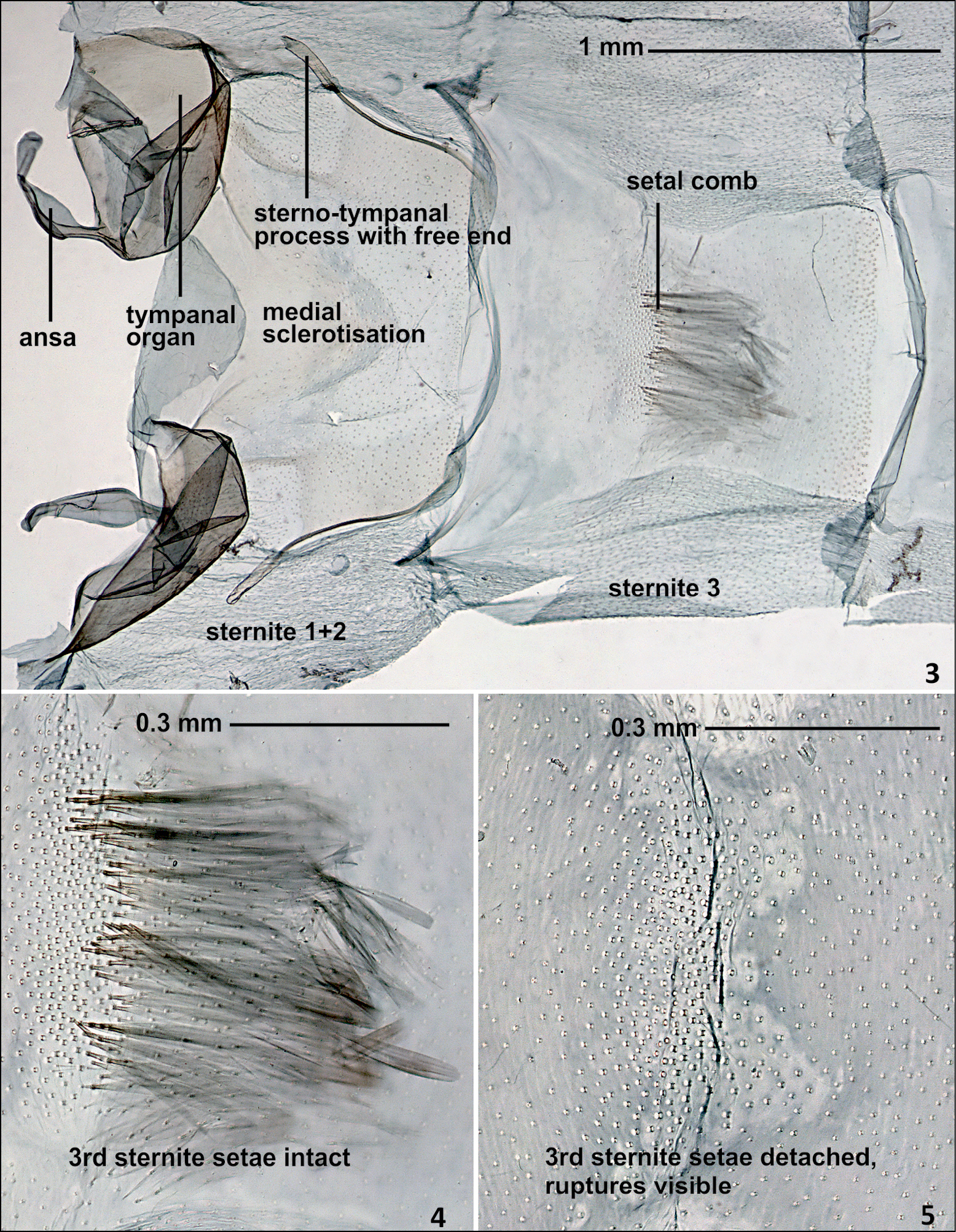
|
||
|
Male abdominal sternite A3 has a small setal comb in Ekboarmia, shown here in E. sagnesi Dufay, 1979. 3–4. Illustrated from a specimen from Spain: Leon, Valle de Luna, 1200 m, 2.vii.2011 (slide Sihvonen 2157, coll. Skou). 5. The setae are detached easily during preparation, revealing an oval field (specimen from France: Dept. Isère, Valle de la Romanche, 1200 m, 22.-23.vi.1999, slide Sihvonen 2095, coll. Skou). The presence of setal comb correlates with presence of sterno-tympanal processes laterally on sternite 1+2, with short, free end. Probably its function is the eversion of the hind leg hair-pencil. Species with a strongly developed hair-pencil always have a strong setal comb and a long sterno-tympanal process. |